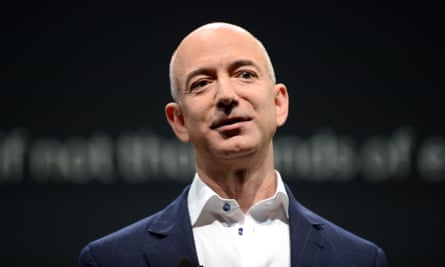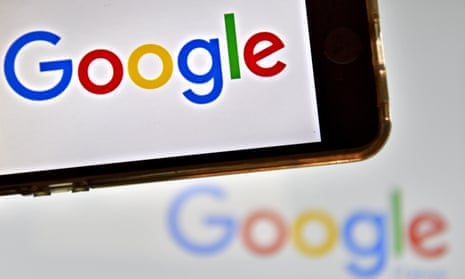Attention, like snow, comes in two varieties; the fun, beautiful kind, and the “wrong” kind, the kind that stops trains and freezes democracy. Recently the seemingly unstoppable digital behemoths of Google and Facebook have been at least temporarily derailed by the wrong kind of attention.
First we had Facebook being unmasked as the world’s largest repository for made-up stories and “fake news”, and now we have Google fighting a rearguard action over apparently putting advertising from respectable companies alongside deranged hate speech videos on YouTube. Advertisers, including the Guardian and the British government, have been withdrawing from Google’s digital ad exchange after discovering their ads alongside videos for, among other things, American white supremacists and violent extremists.
At the risk of biting the hand that feeds, one could speculate that those inclined to watch violent jihadist videos or the Ku Klux Klan’s hate speech might benefit from exposure to messages from the peace-loving Guardian, or London Transport, or indeed government appeals to give blood in a more medically approved manner. However, the lack of “brand safety” online that allows advertising to appear on the channels and videos of the criminally racist and violent can no longer be ignored.
Just as with Facebook’s fake news phenomenon, the problem has been hidden in plain sight for a long time. But until now, the platforms, the advertisers and the public have either not noticed or not cared. It is disingenuous of everyone involved to suggest they did not know that this was a possible outcome. The fact that Google is only now giving advertisers a list of every channel their advertising appears against is surprising; did nobody ask before?
The genesis and unfolding of these crises goes to the heart of how we define the companies that are the new gatekeepers to our news, entertainment and other information.
Sir Martin Sorrell, chairman of the world’s largest advertising agency, WPP, put it like this: “We have always said Google, Facebook and others are media companies and have the same responsibilities as any other media company ... They cannot masquerade as technology companies, particularly when they place advertisements.”
It could equally be argued that they are not “masquerading” as technology companies. They are, after all, stuffed to the primary-coloured rafters with the world’s finest technologists, and they do really believe themselves to be “technology” companies. But it’s hard to deny that they are also publishers. Social platforms including Google, Facebook, Snapchat and Twitter monetise, host, distribute, produce and even in some cases commission material.
By acting like technology companies, while in fact taking on the role of publishers, Google, Facebook and others, have accidentally designed a system that elevates the cheapest and “most engaging” content at the expense of more expensive but less “spreadable” material. Anyone who wants to reach a million people with a poorly produced conspiracy theory video is in luck. If, however, you want to run a well-resourced newsroom covering a town of 200,000 people, that is not going to be sustainable.
It is the height of irony that the currency of social media, “likes” and “shares”, often directly correlate to how aggressive or sensational a piece is. A weaponised populist media, which no longer even has to pick up a phone to sell advertising, has been freed to be as extreme as it wishes. As the American rightwing troll and media personality Mike Cernovich perceptively tweeted: “Conflict is attention, and attention is influence.”

Who pays for reporters to fill the social media feeds?
In a new report I co-authored with the Canadian academic Taylor Owen, The Platform Press: How Silicon Valley reengineered journalism, we see the systemic problems of scale and automation without human editing as a central threat to producing high-quality news and information. Dozens of interviews and extensive analysis support the proposition that whatever the business model of media companies, the relationship with platform companies is critical to their health.
Large news organisations such as CNN put out well over 2,000 items a week on to social platforms, meanwhile newspaper publisher the New York Times and digital native Huffington Post are not far behind with around 1,600 pieces a week each. Even if a publisher limits social distribution to the main platforms – Facebook, Twitter, YouTube, Instagram and Snapchat – there is nevertheless a significant investment in time and energy making slightly different versions of each story work on each platform. This makes the terrain almost impossible for smaller organisations that do not have wealthy audiences, unless they operate under the protection of a non-profit funding structure.
Nicco Mele, director of Harvard’s Shorenstein Center on Media, Politics and Public Policy and a former publisher of the LA Times, identifies it as primarily an economic issue. “This is a crisis – in the next five years print ads are going away. This is a real scenario (for local American journalism); no jobs and no reporters,” Mele told a packed event in San Francisco last week that discussed the balance of power between journalism and technology companies. At the same event, Clara Jeffery, editor-in-chief of Mother Jones, laid out the costs of an award-winning investigation into private prisons: “It cost us $350,000, and we saw maybe $5,000 back on that in terms of advertising.”

Journalism’s striking parallels with the financial crash
Both the fake news concerns over at Facebook and the advertising drama at Google are symptomatic of a wider issue, namely that we have a news environment that is impenetrable and incomprehensible to all but a few. Just as 2008 saw a crisis in the financial markets, 2016 saw a similar crisis in the public information market. The parallels are striking: shoddy mis-sold products circulated at high speed through automatic trading systems beyond the control of even those who designed them.
Like Goldman Sachs, Facebook and Google are too big to fail, but unlike most investment banks, the political developments of the past six months have galvanised a more ideological response from the top of the companies. Visiting San Francisco last week, there was a mood among both local publishers and technology companies that the shock of the US election had provided a mandate for journalists – and a sobering opportunity for self-examination for the masters of the digital universe.
At the same San Francisco journalism event, Jay Hamilton, director of Stanford University’s journalism programme, noted that because of the ownership structure of Facebook and Google, the founders do not have to maximise profitability for shareholders. They retain control of the companies and could therefore decide to prioritise the support of high-quality journalism. Joaquin Alvarado, chief executive of the Center for Investigative Reporting, noted that the local reporting crisis in America was relatively inexpensive to ameliorate: “It’s not a$1tn problem to put reporters in every state house, it is a $100m problem.”
While it is not ideal that independent journalism is slowly being subsumed into a structure of great power, it is encouraging that the controllers of the key companies at least pay lip service to the idea of supporting high-quality reporting. The tech billionaires who have put most into journalism directly are Pierre Omidyar, founder of eBay, whose First Look Media supports both filmmaking and reporting, and the Amazon founder, Jeff Bezos, whose $250m purchase of the Washington Post has, so far, proved to be a spectacular success. When Bezos bought the paper in 2013 it was initially seen as a blow, as the paper’s revered proprietor, Don Graham, said the family company could not make the investments to make it flourish. Four years later both Bezos’s investment and his own personal attention to the technological health of the Post are helping the paper enjoy a renaissance.
For a long time, Silicon Valley companies rejected the notion that they were more than vectors for traffic to publisher sites. Fake news and the inappropriate advertising debacle has robbed them of any plausible deniability that they are media organisations. How they meet their new responsibilities will be fascinating to watch.

